Kona Hei Hei 10
Wheel Size: 29”
Suspension Travel:
- Frame: 120 mm
- Fork: 130 mm
Geometry Highlights:
- Sizes Offered: S, M, L, XL
- Headtube Angle: 66°
- Reach: 449 mm (Size Medium)
- Chainstay Length: 435 mm (all sizes)
Frame Material: Carbon fiber
Price:
- Complete bike: $5,299 USD
- Frameset: $2,950 USD
Blister’s Measured Weight: 30.2 lbs (Hei Hei CR, Size Large)
Test Location: Colorado
Reviewer: Dylan Wood: 5’10.5”, 160 lbs / 179 cm, 72.5 kg
Test Duration: 3 months
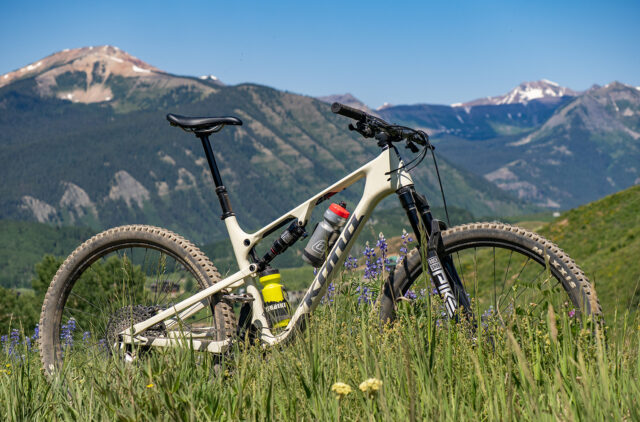
Intro
The “Hei Hei” (pronounced “hay hay”) name has existed in Kona’s lineup for over 30 years now. Starting as a titanium hardtail in 1991, the Hei Hei eventually evolved into a full-suspension, carbon fiber Cross-Country bike. Kona launched the 10th version of the Hei Hei back in April, sticking to its XC roots while getting it up to speed on today’s XC tech and geometry. We’ve been riding the new Hei Hei for the past few months, but before we get into our on-trail takeaways, let’s look at the Hei Hei’s design:
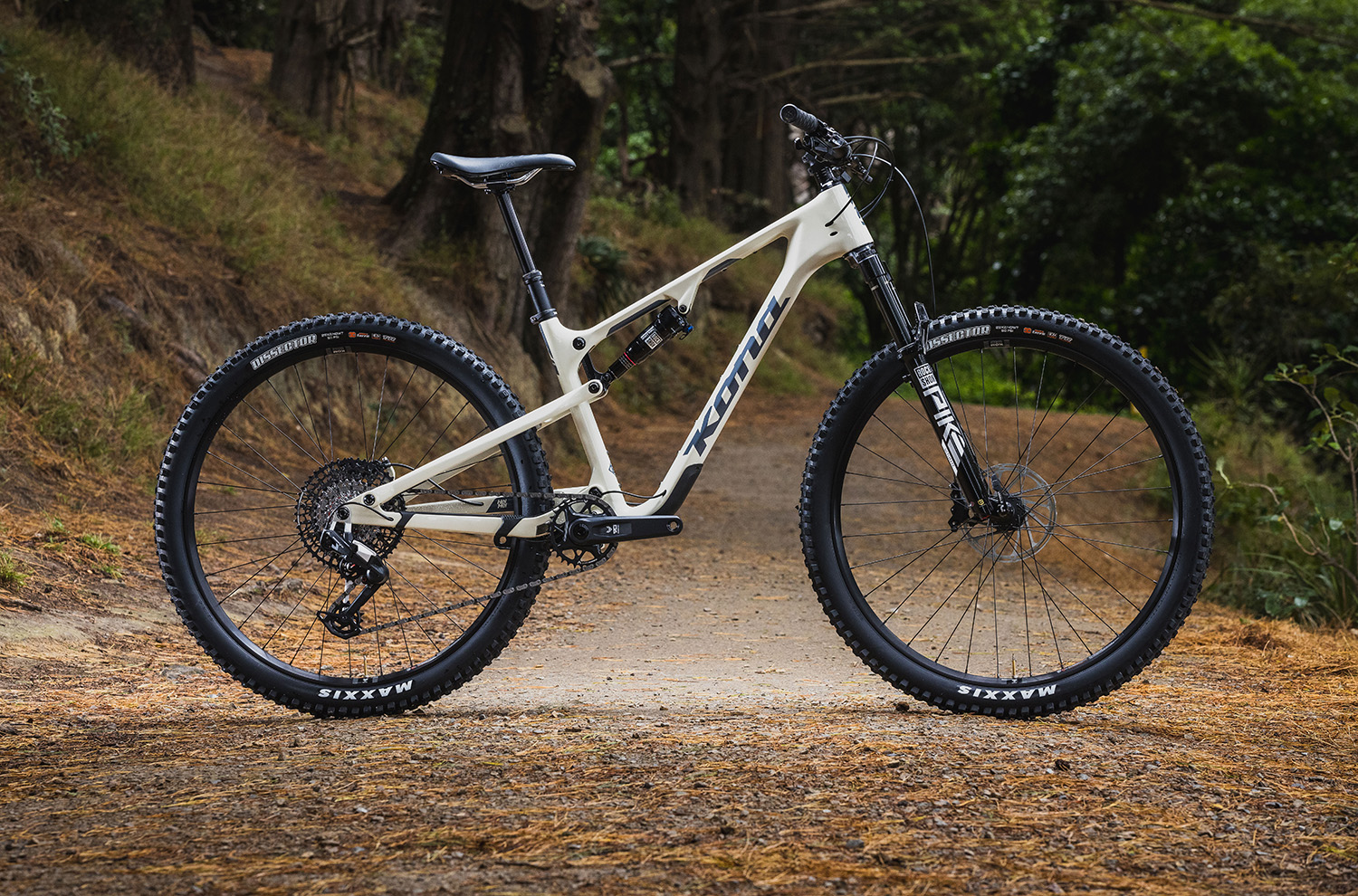
The Frame
The Hei Hei maintains its 120 mm of suspension travel in the rear, using a similar-looking linkage layout with a few revisions. While many companies are focused on achieving ~120 mm of rear travel with as few pivots as possible for the name of weight savings on their race-focused XC bikes, Kona added a pivot point to the Hei Hei near the dropout, moving away from the flex stay design used on the prior generation bike. Kona also slightly revised the location and orientation of the upper link that drives the rear shock, leaving it hanging from inside the top tube near where it meets the seat tube, and revising where the shock mounts to the link. Kona claims that the Hei Hei’s revised suspension layout is designed with compliance and comfort in mind, and that they’re happy with the slight weight penalty of this suspension design when compared to a flex-stay design, which most other manufacturers have moved to for their weight-conscious XC bikes.
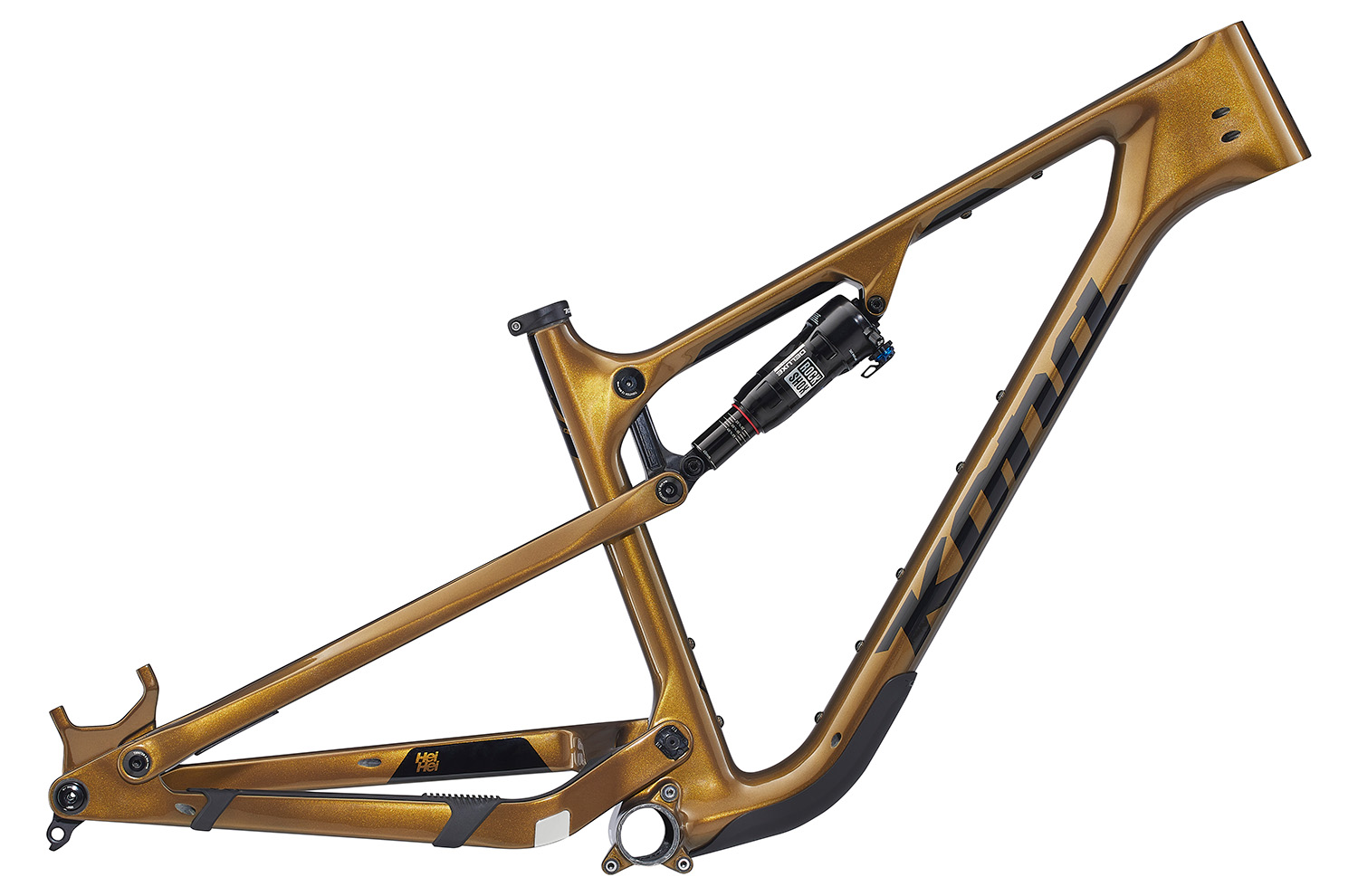
Kona also made it a priority to increase the anti-squat of the Hei Hei, especially deeper in this bike’s travel. This new Hei Hei still starts with around 118% of anti-squat, but the curve stays flatter for longer, ending with 98% anti-squat at bottom out. This new suspension design also resulted in a significant change in the Hei Hei’s leverage curve. The leverage ratio starts at just over 2.8, stays relatively flat for the first ~35 mm of travel, then dips down in a smooth, straight line at the sag point (30%), ending with a leverage ratio of just under 2.4 at its maximum of 120 mm of travel. Kona claims that this curve is similar in character to their longer-travel Process 134 and 153 Trail bikes, aiming for a consistent feel out of all 120 mm of available travel.
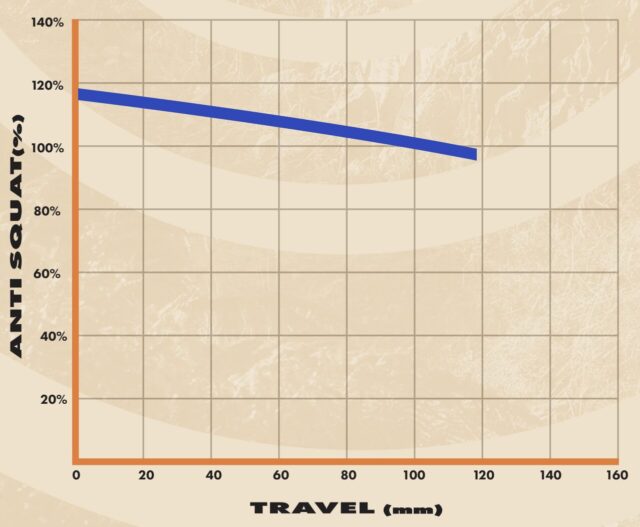
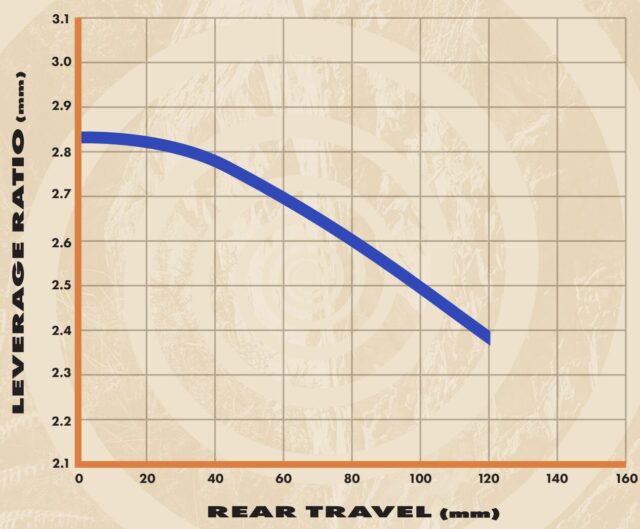
The Hei Hei is only available in carbon fiber, and Kona also prioritized a sleeker look with this frame, straightening out the down tube and seat tube, with the latter allowing for greater seatpost insertion. They also added UDH compatibility to the Hei Hei, and the frame features a whopping nine bottle bosses in the front triangle, allowing for plenty of bottle cage and tool mount options. (They’re not all usable simultaneously, of course, but there’s a ton of flexibility in positioning whatever you want to mount up.) Kona claims that at least two water bottles should fit inside the front triangle on every frame size, unless you choose to run a rear shock with a piggyback reservoir.
Fit & Geometry
The previous Hei Hei’s geometry wasn’t super out-of-date by any means, but this new Hei Hei has more modern numbers. Looking at the reach, the Small Hei Hei kicks things off with a 424 mm reach, growing by 25 mm each size up until the Large, then jumping 35 mm between the Large and XL sizes to finish with a reach of 509 mm on the biggest Hei Hei. This is an increase of 9 mm for each size when compared to the outgoing Hei Hei — a significant, but not radical jump. The 10th generation of the Hei Hei also (unsurprisingly) sports its slackest head tube angle yet, at 66º for all sizes — a change of 1.5º over the 9th gen Hei Hei.
It’s also worth noting that the new Hei Hei is designed around a 130 mm fork up front, an increase over the 120 mm forks spec’d on the previous Hei Hei. The Hei Hei’s stack height has also grown slightly to account for this, starting at 606 mm on the Small, then 620, 630, and 639 mm for the Medium, Large, and XL sizes, respectively. It’s worth noting that this is an increase of more than just 10 mm to account for the longer fork on this new Hei Hei, with stack numbers having increased by 15-29 mm, depending on the size. This stack height is a bit higher than some race-focused XC bikes, but still lower than most Trail bikes out there.
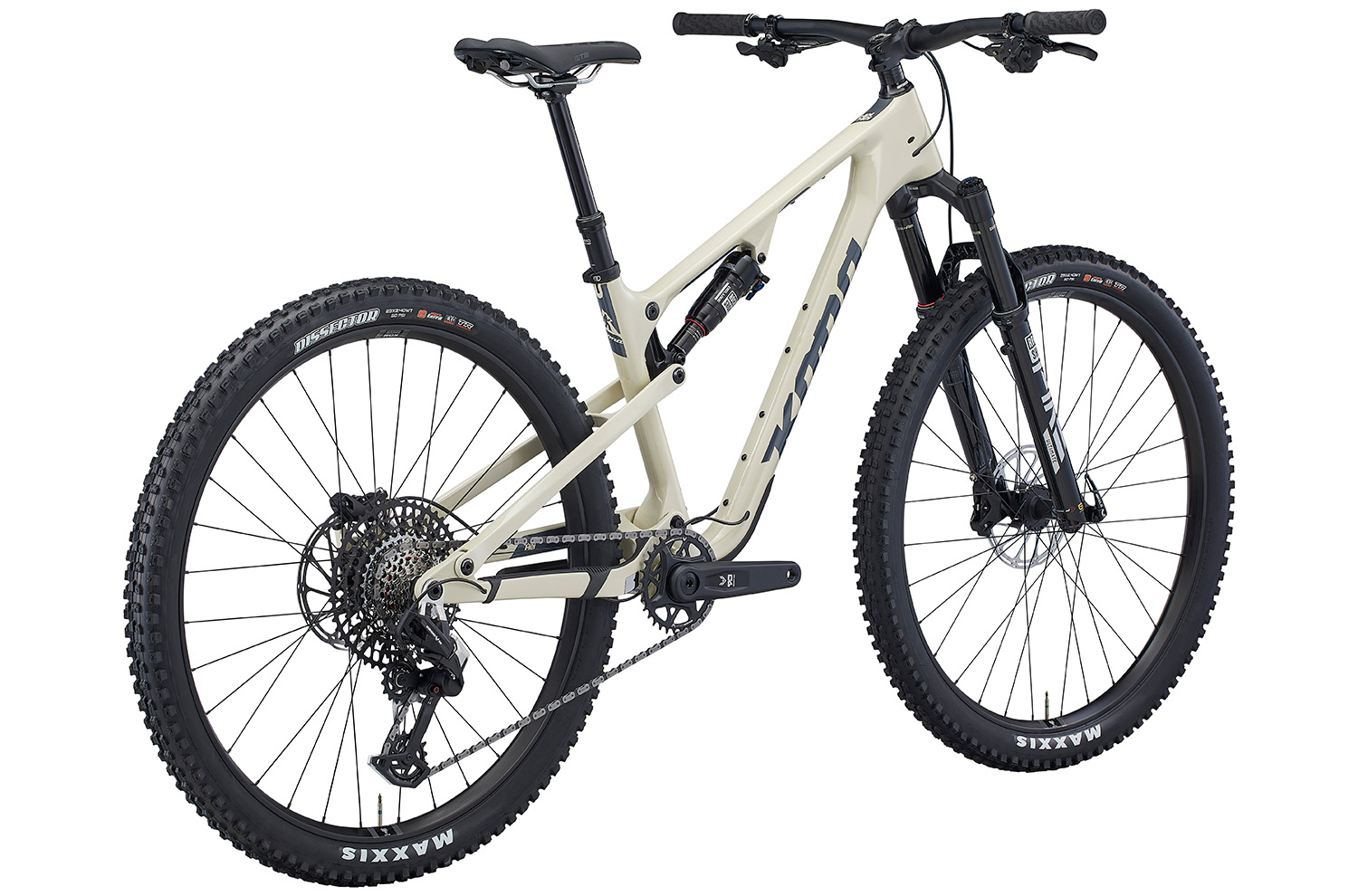
The rest of the geo chart looks modern and well-rounded, with an effective seat tube angle at about 76º, a degree steeper than the 9th gen Hei Hei. The Hei Hei’s chainstays have also grown by just 5 mm in each size, putting them at 435 mm across the board for all sizes. Some manufacturers have gone to size-specific chainstays on XC bikes, though it’s still more common to keep the same chainstay length across a size offering of XC bikes (as Kona has done here) than, say, Trail or Enduro bikes these days. Kona hasn’t yet offered a bike with size-specific chainstays, and they’re not starting with this new Hei Hei.
It’s also worth noting that Kona condones running the Hei Hei with a 120 mm fork up front for folks who want to give this bike more of an XC focus, though doing so will change the geometry slightly.
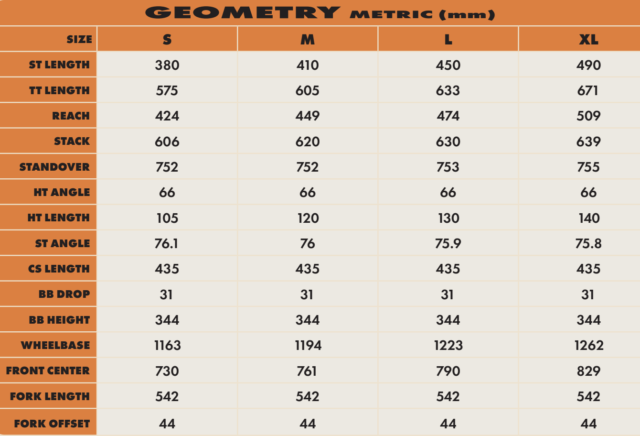
The Builds
Kona offers only one complete build kit for the new Hei Hei, simply called the Hei Hei CR. They’ve positioned this bike pretty close to the middle of the price spectrum for a complete bike these days at $5,299 USD. The build kit is not comprised of the lightest components out there, but instead, Kona appears to be using parts that are a step up in downhill focus from the lightest bits & pieces you’d typically see in the pits of a World Cup XC event.
Kona is also using the new cable-actuated SRAM Eagle 90 Transmission on the Hei Hei. This seems to be both a cost-effective and weight-saving move from Kona. Despite its popularity, electronic AXS Transmission systems are typically heavier than similarly tiered cable-actuated alternatives, so it makes sense to see Kona putting something like Eagle 90 Transmission on an uphill-focused bike where too much weight is indeed a concern.
Highlights from the available build are as follows:
Hei Hei CR ($5,299 USD)
- Drivetrain: SRAM Eagle 90 Transmission
- Brakes: SRAM Motive Bronze 4-Piston (180 mm rotors front & rear)
- Fork: RockShox Pike Ultimate (130mm) Charger 3.1 RC2
- Shock: RockShox Deluxe Ultimate, 2-position lockout
- Wheels: WTB KOM Team i30 TCS 2.0 rims laced to DT Swiss 370 hubs
- Dropper Post: TranzX +RAD Internal (125-200 mm, depending on size)
The Hei Hei is also available as a frameset for those who would prefer to build their bike from the frame up. The frameset includes the carbon Hei Hei frame, a RockShox Deluxe Ultimate rear shock, a rear axle with UDH hanger, full chainstay, seatstay, and downtube protection pieces, and a seat clamp. It’ll set you back $2,950 USD.

Full Review
Dylan Wood (5’10.5”, 160 lbs / 179 cm, 72.5 kg): I’ve been testing the latest Kona Hei Hei on a variety of trails over the past few months. When I received this bike, I wasn’t quite sure where it would land on the Trail/XC bike spectrum, but after a few months aboard the Hei Hei 10, I understand what kind of rider and terrain it’s for.
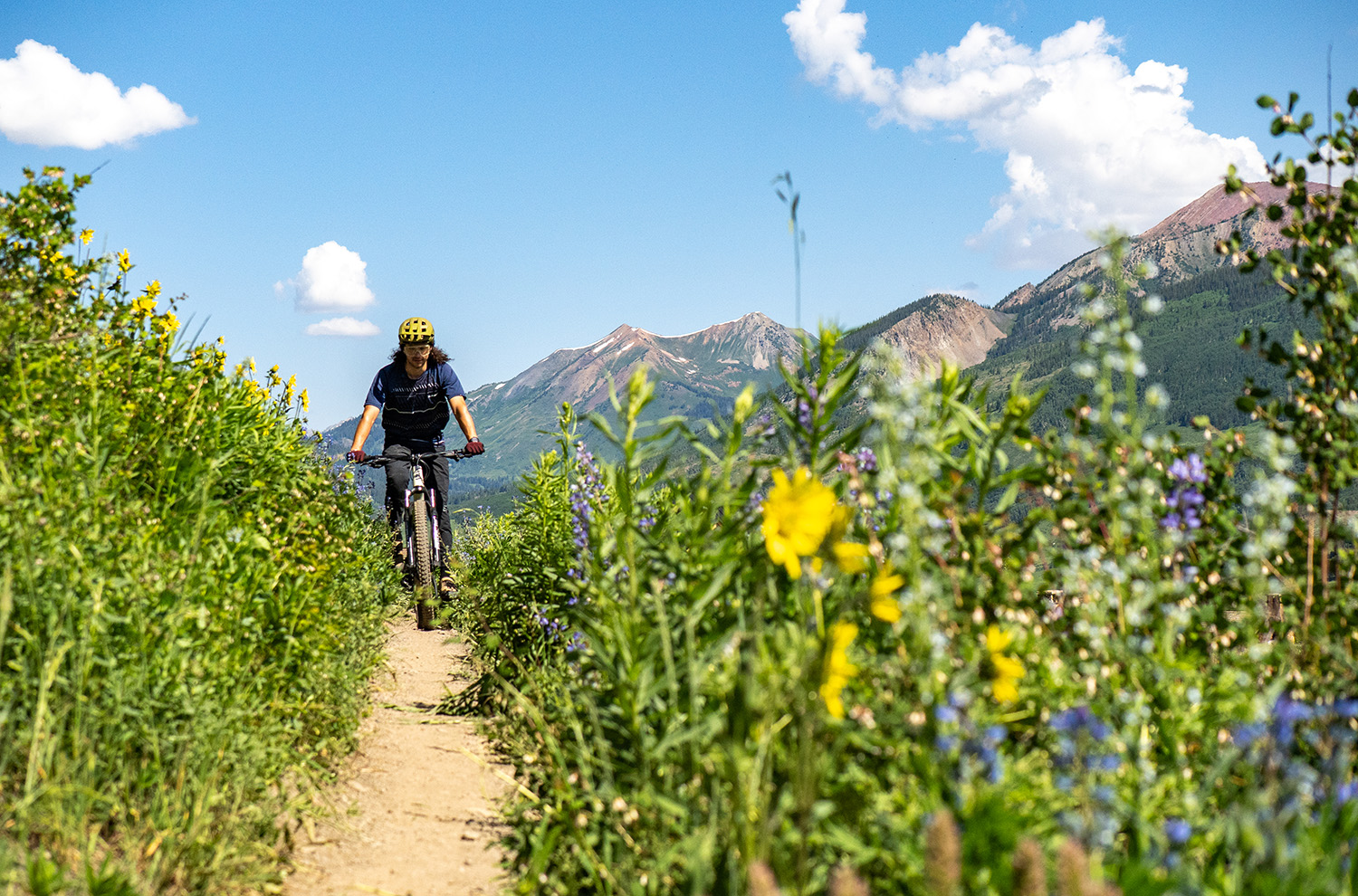
Fit & Sizing
At 5’10.5” / 179 cm, I’m squarely in the middle of Kona’s recommended sizing chart for their Large Hei Hei. And when hopping aboard this bike, that adds up — the Large Hei Hei provides a familiar and comfortable Trail bike fit for me. I certainly wouldn’t want to size up or down on this bike.
The effective seat tube angle of 75.9º, a moderate reach measurement of 474 mm, and a somewhat higher-than-average stack height of 630 mm on the Large Hei Hei all added up to a fit that falls somewhere between XC race bikes and true Trail bikes. The seated pedaling position is a bit more upright and relaxed than World Cup XC bikes like the Yeti ASR and Cannondale Scalpel. But, it also puts you in a more aggressive seated pedaling position than a more Trail-focused MTB, like the Cannondale Habit. The result is a bike that allows you to put the power down when you need it, but also lets you cruise along with your chest fairly upright when you want to.
On flatter roads and trails, I’m quite happy with the Hei Hei’s effective seat tube angle of 75.9º. I find that it puts me in a good position to put the power down when I need to. And when the trail gets steeper, I had an easy time getting my weight forward enough on the Hei Hei, keeping the front wheel weighted and preventing it from wandering. On steep, sustained climbs, I did find myself sitting on the tip of the saddle, but there’s enough fore-aft adjustment opportunity here to slide the WTB Volt saddle farther forward to alleviate that tendency if need be.
Because I mostly did long rides on the Hei Hei with a focus on covering ground quickly and putting in power on the uphills, I opted to run the stem with just a 5 mm spacer between it and the headset. This resulted in an XC-like fit that encouraged me to get aggressive on the uphills, without being uncomfortable 25 miles into a ride. I also liked how this resulted in a more aggressive descending position, encouraging me to drive the front wheel of the bike through corners while still letting me get my weight far enough back on steep descents. Folks who like their handlebars to be higher should be able to achieve the fit they prefer with the stem a little higher on the steer tube, too.
Climbing
The Hei Hei is an efficient climber, rewarding hard pedaling efforts with instant forward momentum. My first few rides on the Hei Hei, I didn’t even think about touching the shock’s rear lockout — the Hei Hei is inherently efficient, losing very little pedaling energy to suspension squish. But, using this lockout makes the Hei Hei even stiffer and more efficient out back, at the cost of some compliance, of course. I found myself only really using it on smooth roads and trails, and often forgetting to engage it at all due to how well the Hei Hei climbs without it.
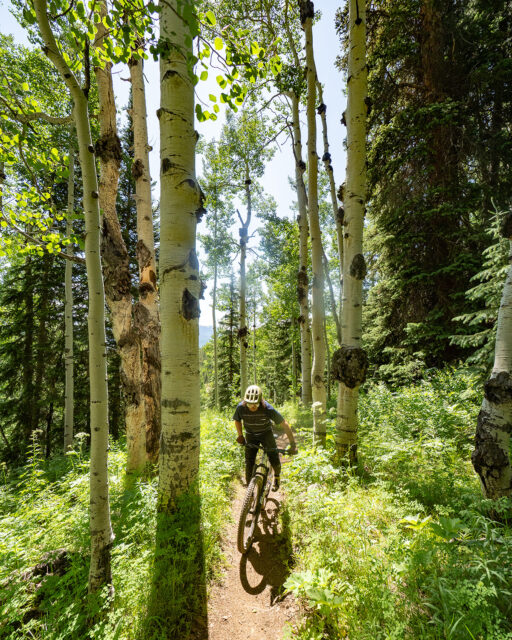
At the same time, the rear suspension remains active enough to tackle technical climbs, with the rear wheel doing a great job of staying engaged with the ground below. It doesn’t provide as much traction here as a Trail bike with more travel, like the Santa Cruz Hightower, but it’s also notably more efficient than bikes in that class. At the same time, World Cup XC bikes will definitely be more efficient on smooth climbs, but the Hei Hei provides better traction than those bikes, too. It strikes a nice middle ground that a lot of riders will appreciate.
Kona talks about the Hei Hei as being a mountain bike that’s a little more descent-focused than a true XC race bike, but one that’s still capable of putting some fast times down between the tape. I was able to throw a number plate on the Hei Hei and do a couple of XC races during my time on it, and I think it’s a fine XC race option. It’s relatively heavy, and while swapping some parts out could get this 30.2-pound (13.7-kilogram) bike down a couple of pounds, you’ll be at an inherent disadvantage climbing against true XC race bikes that weigh 25 lbs (11.34 kg) or less.
But, I do think the Hei Hei has an advantage over lighter XC bikes with less travel on long, bumpy courses, where the Hei Hei’s more compliant suspension provides better long-term comfort. If I were racing a 15-mile course on blue/black XC trails, and you gave me the option of the Hei Hei or, say, the Yeti ASR, I’d take the ASR. But, if you signed me up for a longer,
backcountry-style race (like the Vapor Trail 125, for example) and gave me the same two options, I’d take the Hei Hei as it should allow me to save more energy over time, both climbing and descending.
Folks who want an efficient full-suspension MTB should be quite pleased with how the Hei Hei climbs. Swapping its Maxxis Dissector tires out for lighter, faster-rolling tires would also provide better climbing performance, too, and putting those lighter tires on a more weight-conscious carbon wheelset would also be doing yourself a lot of favors in the realm of uphill efficiency. But, as it comes stock, the Hei Hei CR is just a step away from true XC bikes when it comes to how it climbs.
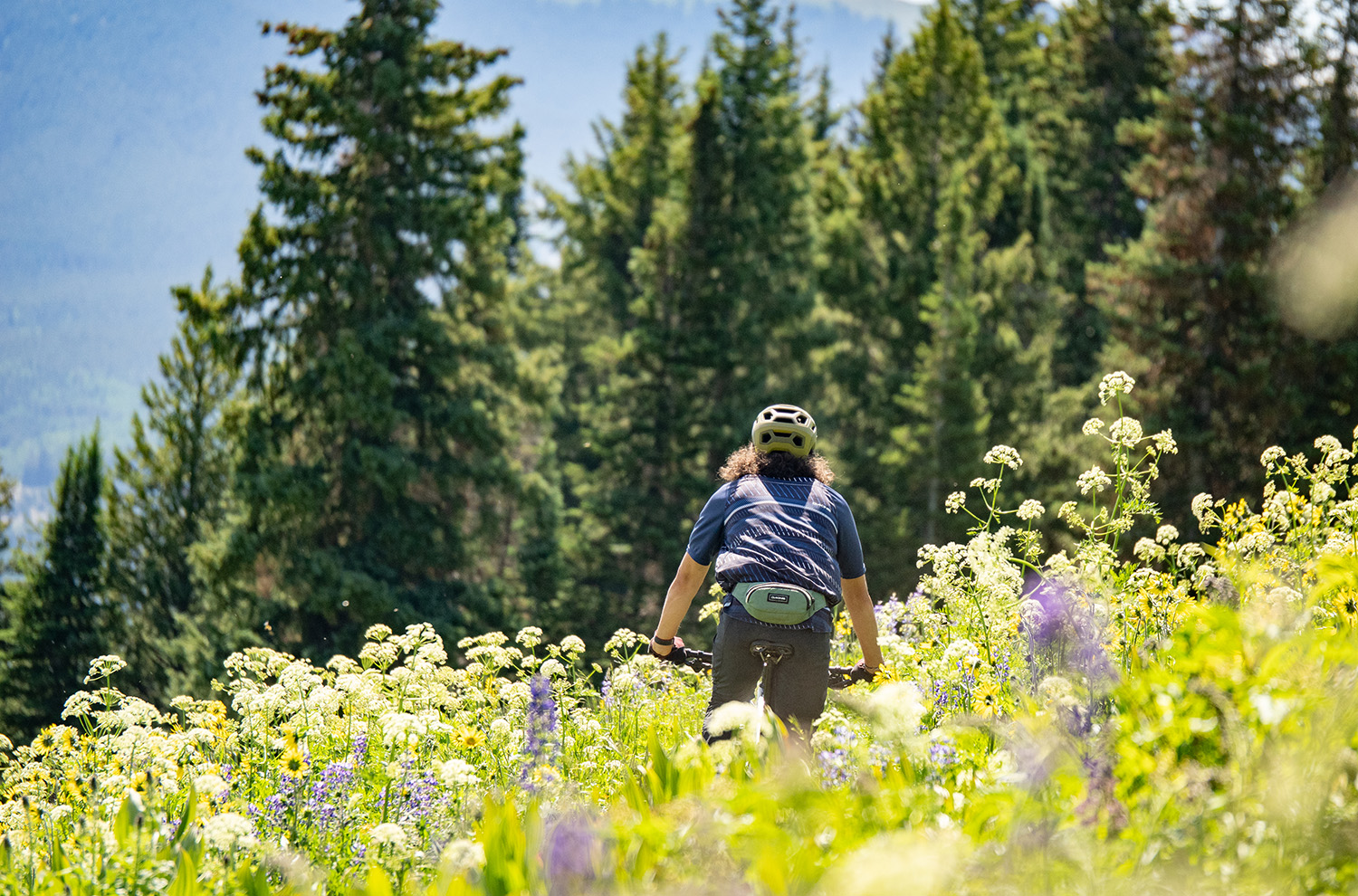
Descending
On the way down, the Hei Hei provides a responsive, playful, and impressively capable ride, further slotting itself in a versatile position between the XC and Trail categories.
The first thing I noticed aboard the Hei Hei is how playful it is. It’s easy to get this bike airborne, with responsive suspension and relatively short 435 mm chainstays to thank for that. The Hei Hei is easy to flick around and maneuver in tight corners, and it’s also quite agile and easy to change directions at the last minute aboard this bike. Combine that with relatively grippy Maxxis Dissector tires, and the Hei Hei is great at cornering. This is one area where I notice an advantage over lightweight XC bikes, often equipped with flex-stays — the Hei Hei frame has excellent torsional stiffness for its class, providing precise steering in corners and through rough terrain.
Speaking of which, when the trail gets more technical, steep, rowdy, chunky, and fast, the Hei Hei does a good job of providing adequate stability for its class. In this sort of terrain, I feel much more confident aboard the Hei Hei than I do on World Cup XC bikes, where the Hei Hei provides better traction, precision, and stability. Sure, Trail bikes with more travel and more aggressive geometry outperform the Hei Hei here, but the Hei Hei also has a significant advantage over those bikes when it comes to climbing performance. Additionally, the Hei Hei feels more responsive and exciting on mellower trails compared to Trail bikes with more plush suspension. The Hei Hei rewards an active riding style, pumping over rollers, pushing into corners, and pedaling through flatter sections of descents.
I certainly found the speed limit of the Hei Hei a few times, where blasting through a rock garden resulted in a more out-of-control experience than I’d like. But, if you’re willing to slow things down a bit and take a more calculated approach through rough trails, the Hei Hei can handle just about anything other than large jumps and drops, as well as super abrupt g-outs.

The Build
Kona offers the Hei Hei in just one build kit, and it’s a very well-rounded, reasonably priced one.
The RockShox suspension on this bike is certainly a highlight for me. The Deluxe Ultimate shock aided this bike’s responsive, engaging feel. I enjoyed using the 3-position low-speed compression adjustment, setting it in the “-” position for steep, chunky trails, the “+” position for flowy, dynamic trails, and leaving it in the middle for trails that were a mix of both, or trails I was unfamiliar with. Its 2-position lockout was sufficient and easy to actuate, though dedicated racers might want a lockout on the handlebars of the Hei Hei. The Pike Ultimate fork up front also provided the Hei Hei with steering precision that allowed this bike to outperform XC race bikes (often equipped with the lighter, skinnier RockShox SID fork or similar) on demanding descents. I’m fine to forego a lockout on the fork up front here, as I rarely ever find myself using one anyway, and the Charger 3.1 RC2 damper with both low- and high-speed compression as well as low-speed rebound adjustment allowed me to dial in the feel of this fork.
My first experience with SRAM’s new Eagle 90 Transmission was aboard the Hei Hei, and I’m a fan. Shifting is crisp and quicker than AXS Transmission, and I also prefer the ergonomics of the Eagle 90 shifter over SRAM’s electronic pod shifters. I will say, the Eagle 90 drivetrain does lack some of the precision of AXS Transmission, and I often found myself wishing I could micro-shift in a couple of gears to improve this mechanical drivetrain’s shifting. But, compared to other mechanical 12-speed drivetrains out there, Eagle 90 is as good or even better than similarly priced options.
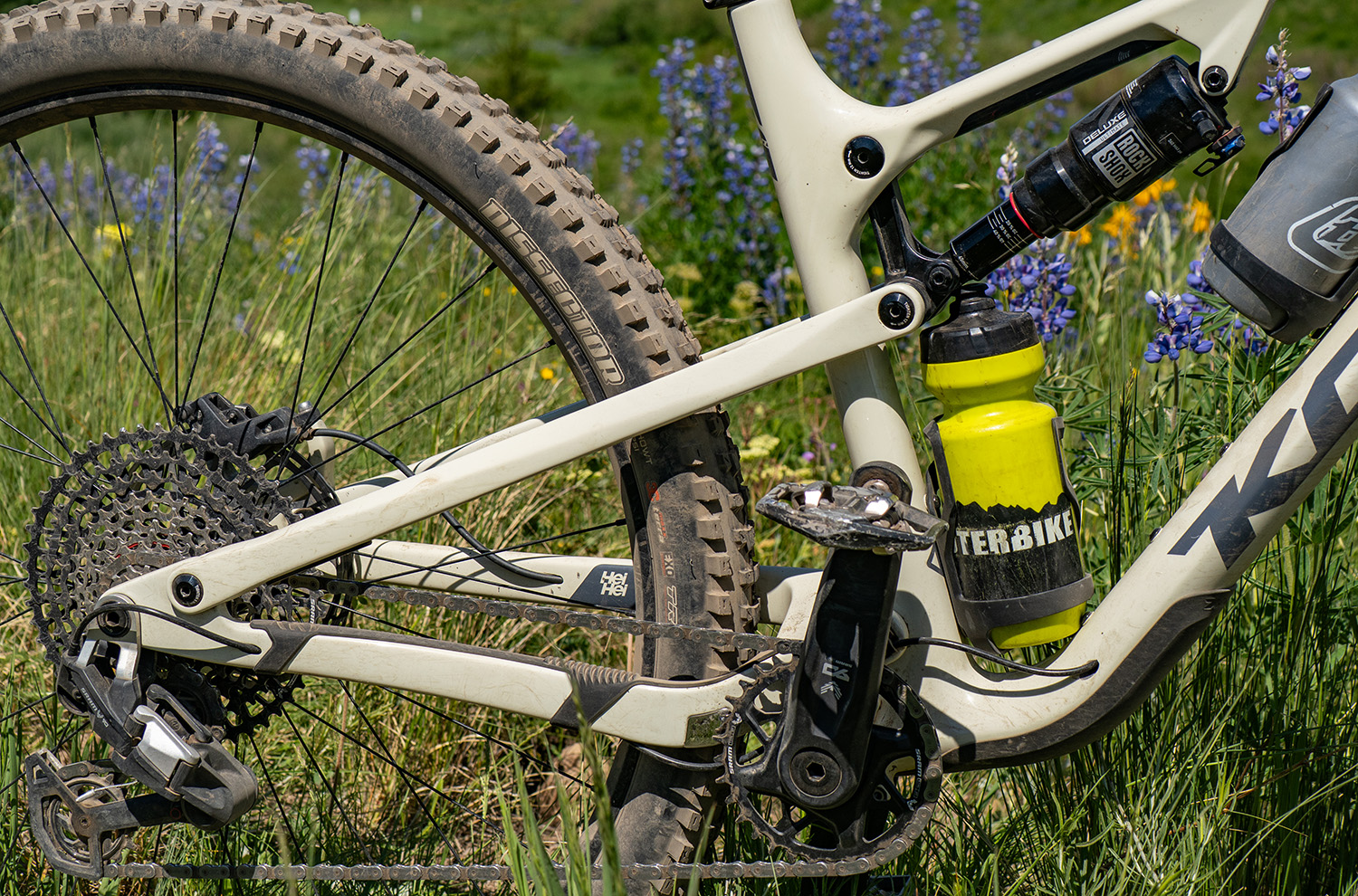
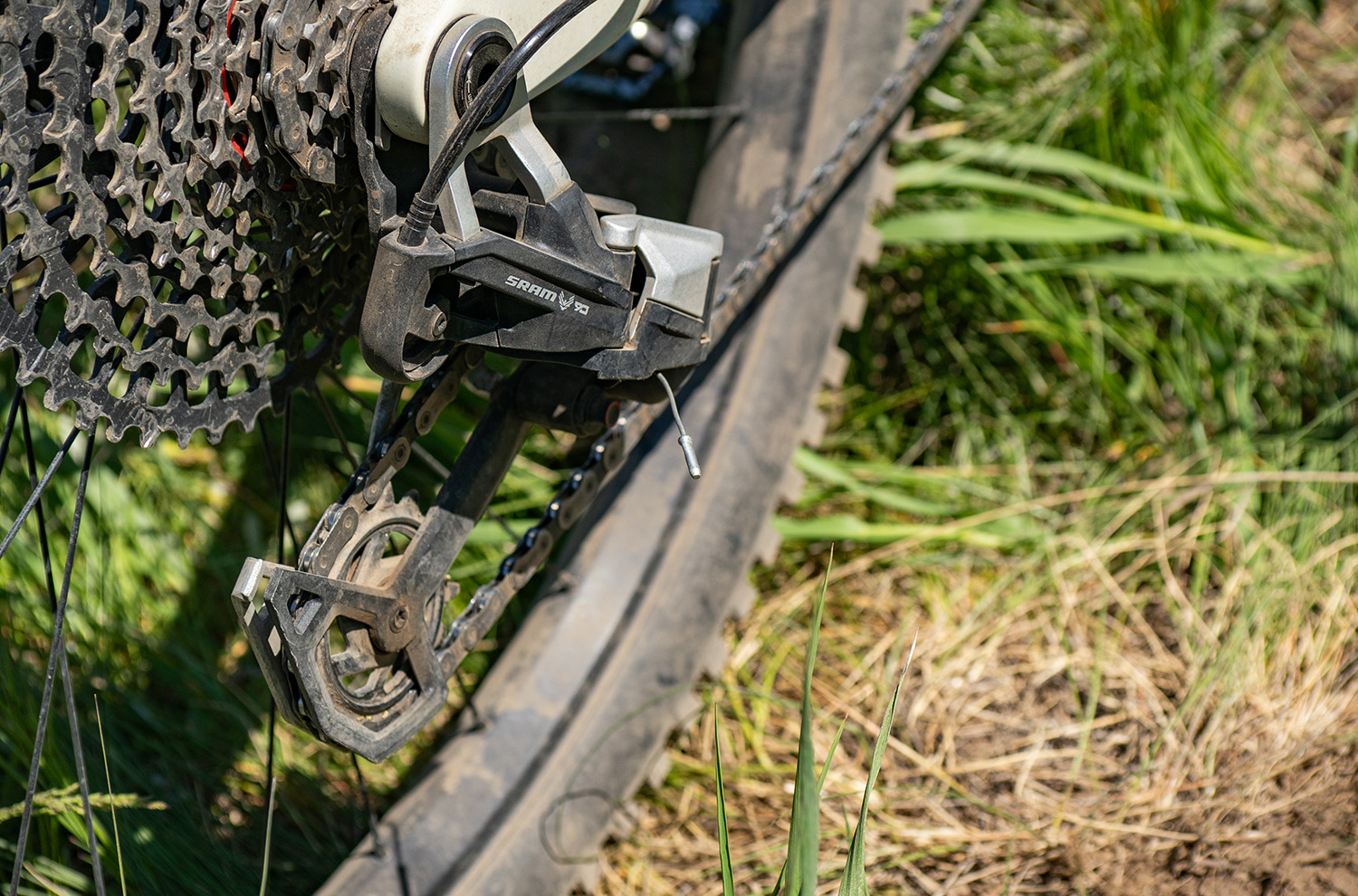
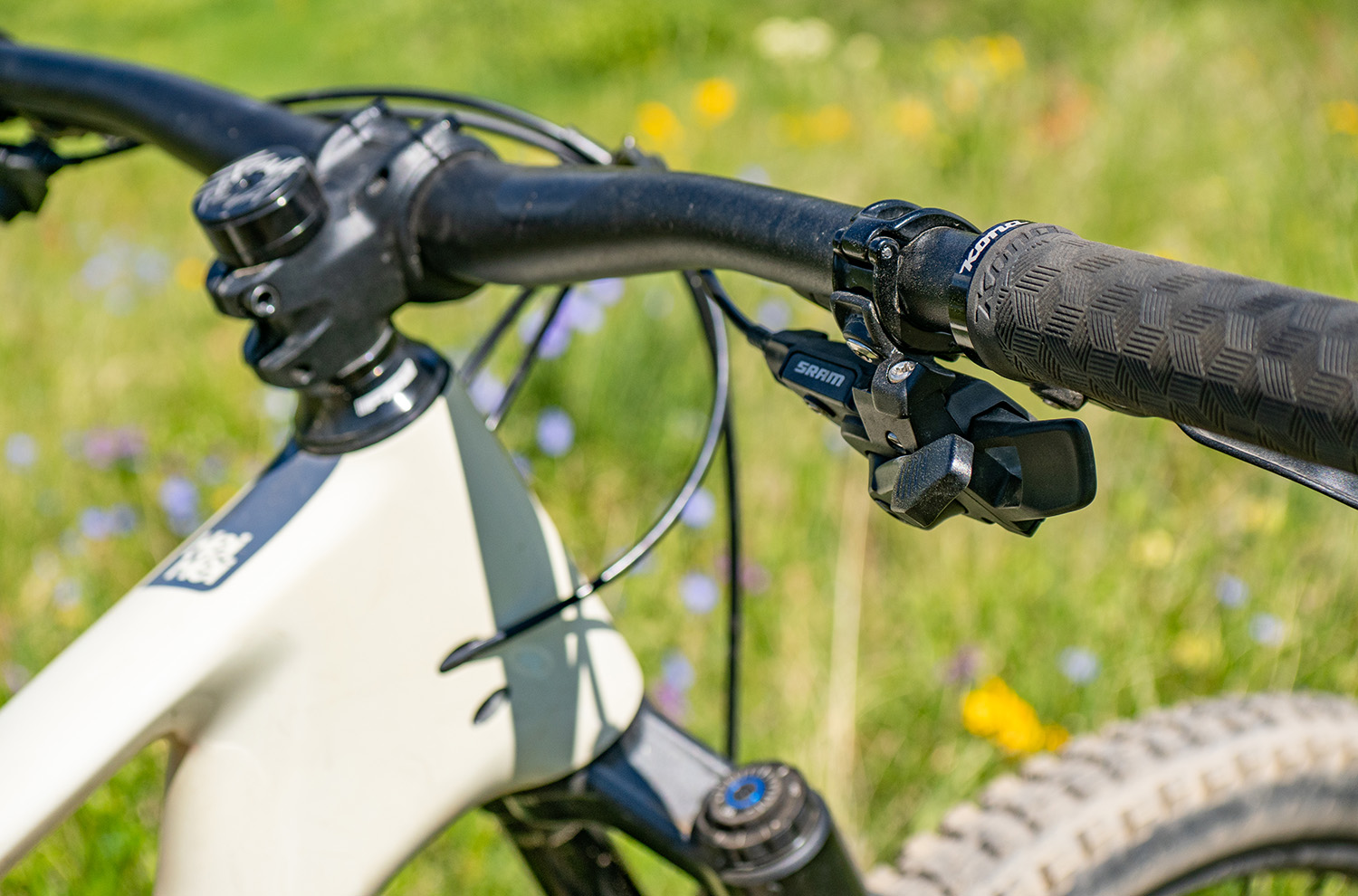
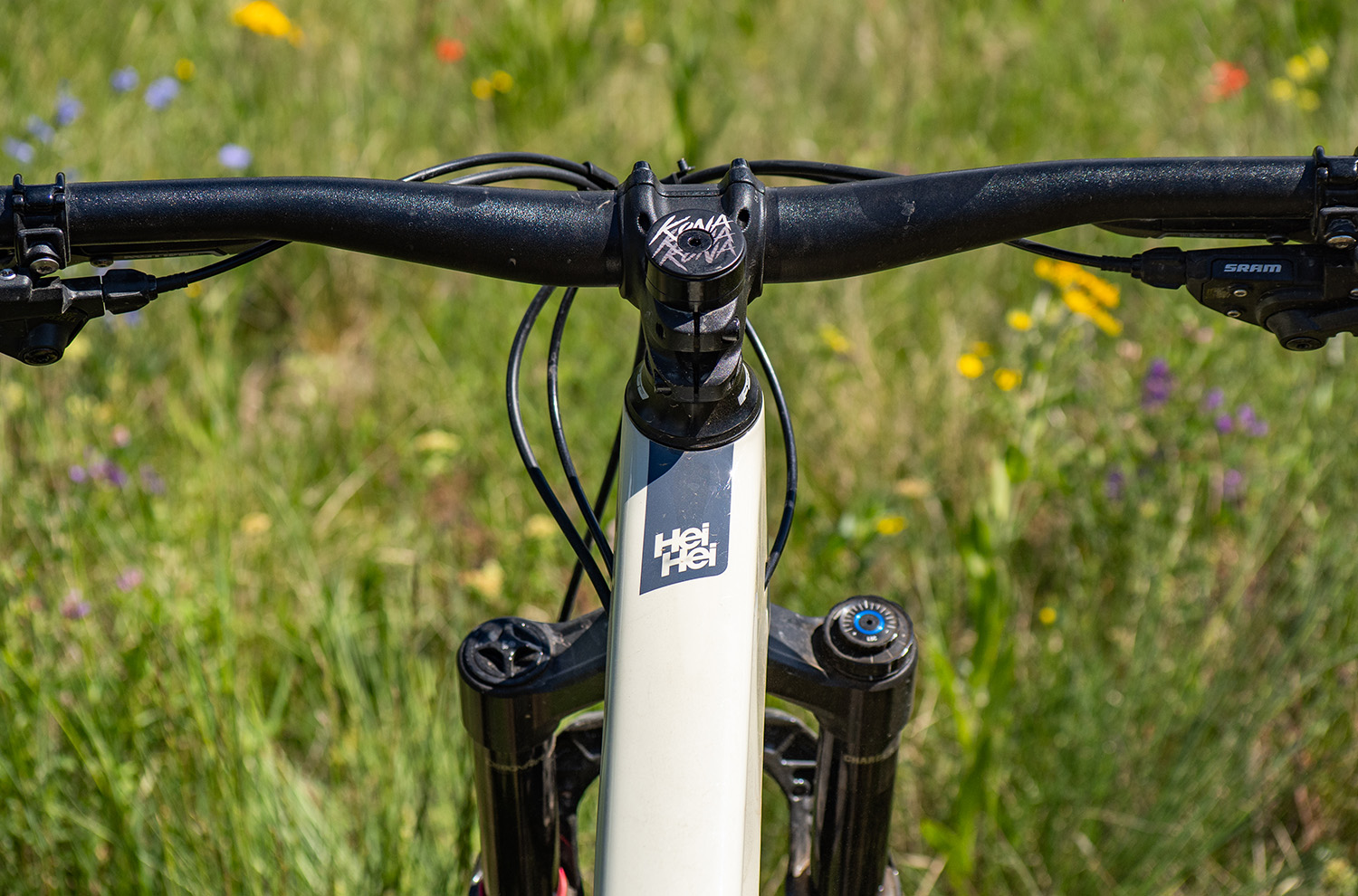
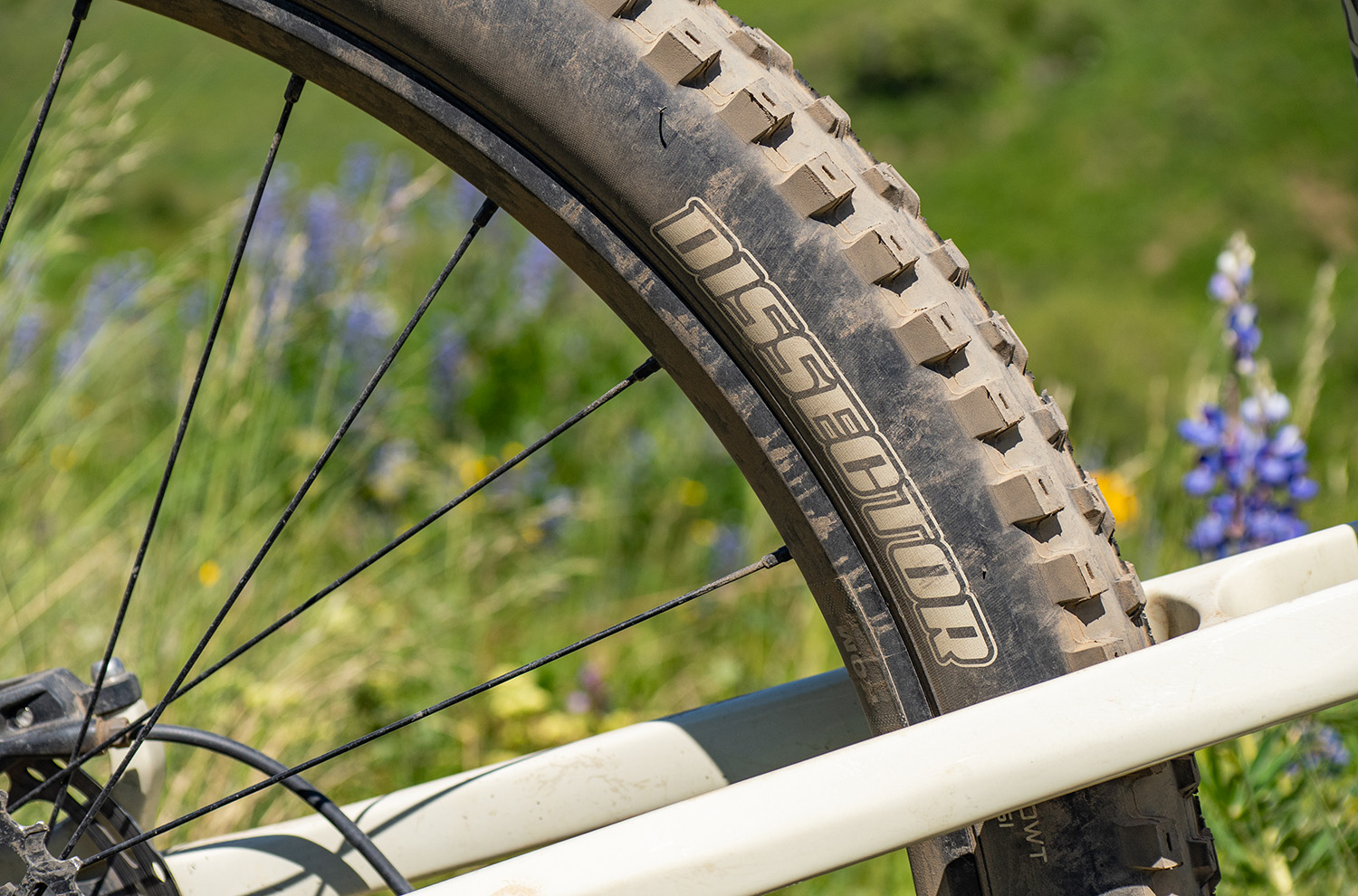
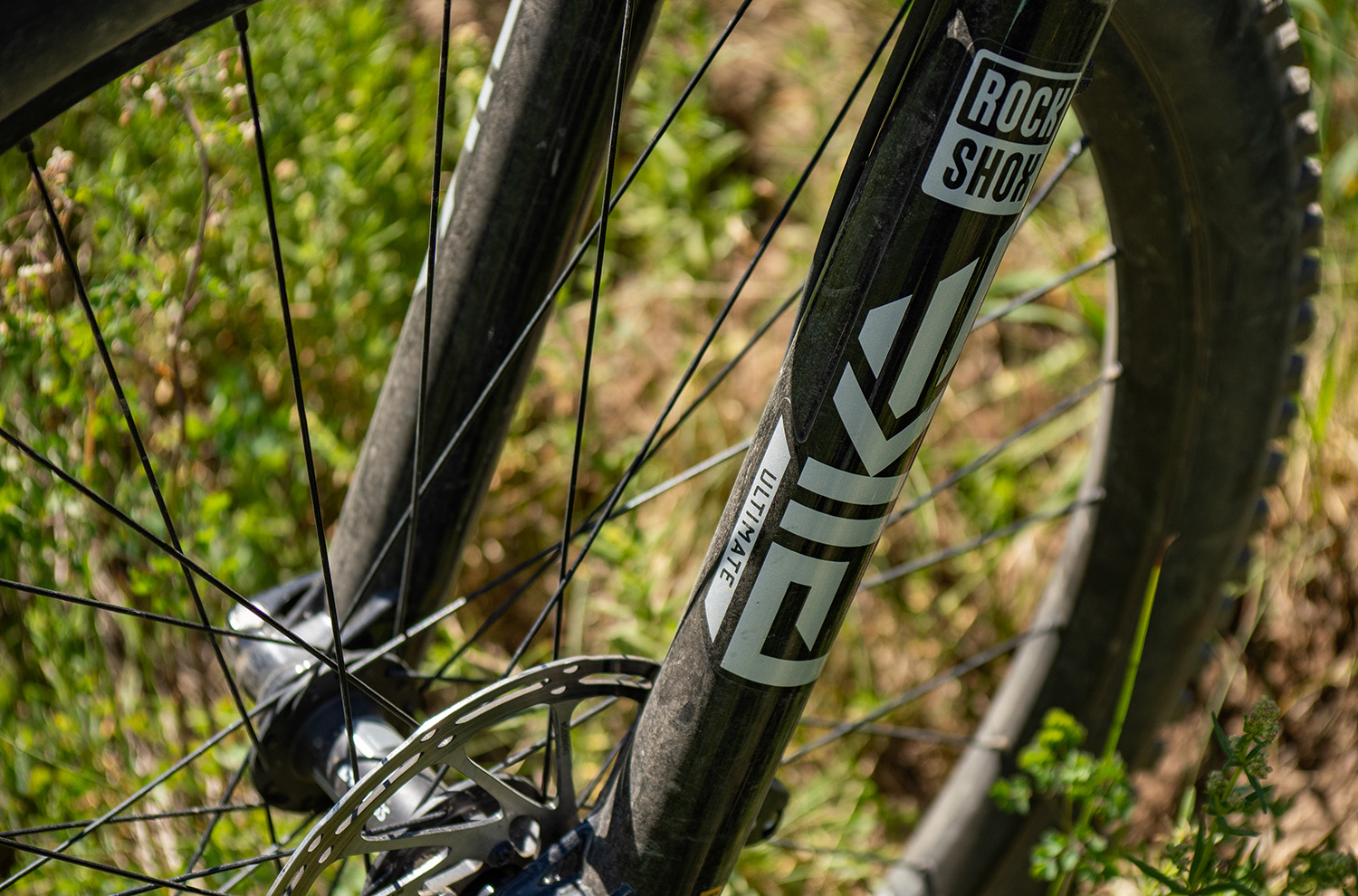
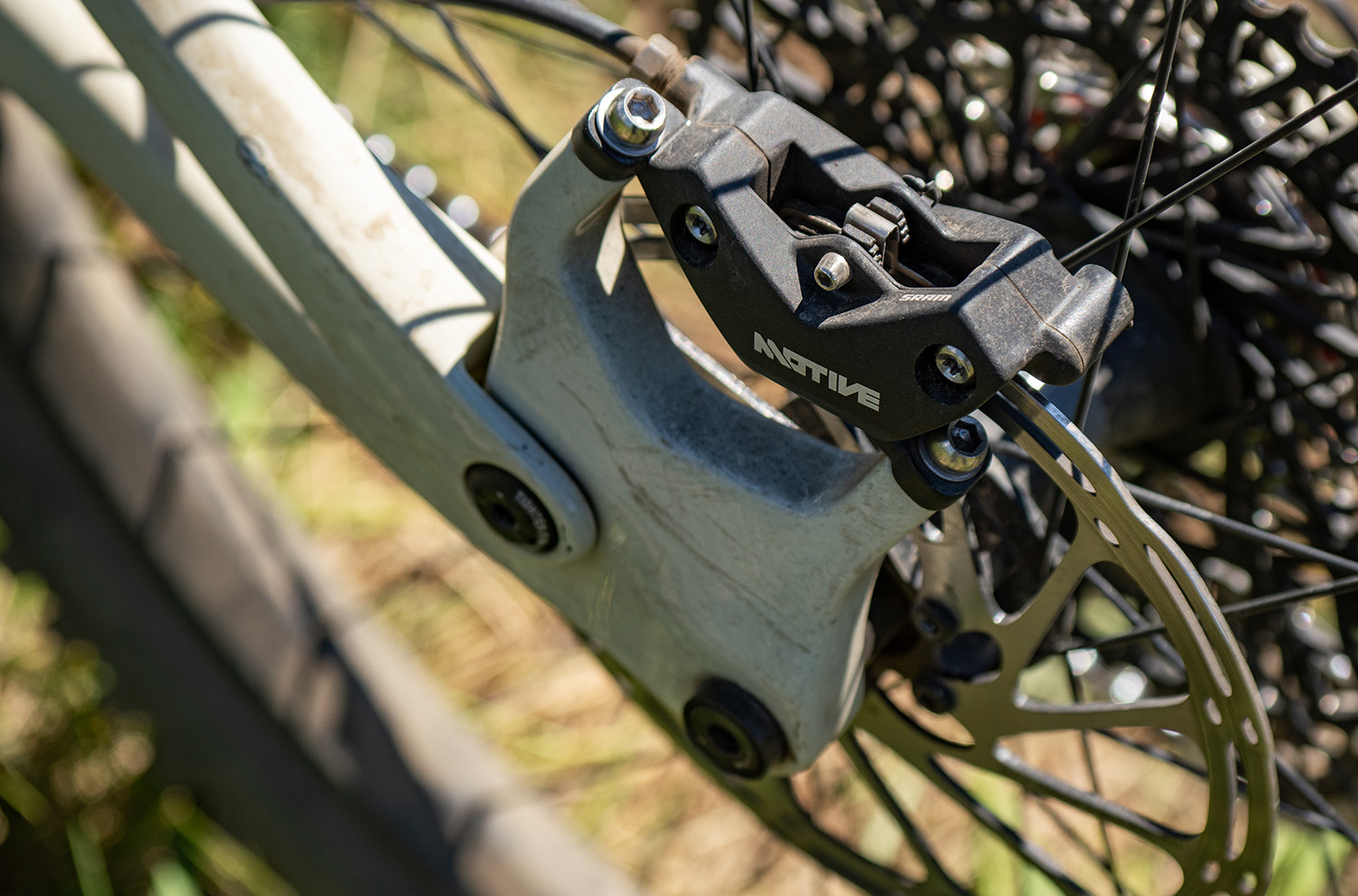
I also found SRAM’s Motive Bronze 4-piston brakes a good fit for the Hei Hei. They felt consistent throughout my test period, never requiring a bleed. Additionally, when paired with 180 mm rotors and grippy Maxxis Dissector tires, these brakes offered good stopping power for the Hei Hei, feeling at home on this lightweight XC/Trail bike, though I’d prefer Mavens or something similar on a heavier, more descent-focused rig. I also got along well with the cockpit parts Kona put on this bike, including the TranzX +RAD Dropper, which performed consistently well throughout my time on the Hei Hei.
I think the standalone “CR” build kit on the Hei Hei is a great middle ground for folks who will do a variety of riding on this bike. Kona offers a frame-only option here for a reason, too, and I think folks who want to focus more on XC races aboard the Hei Hei will be better off building it from the ground up, likely speccing it with a lighter 120 mm fork, as well as lighter wheels and tires. Folks who like the stock build kit but also might want to get a little better uphill performance out of the Hei Hei should consider buying an extra set of tires and/or wheels for the Hei Hei, as lots of ground could be made up in the realm of rolling resistance and rotational weight. But, for most riders out there who should have the Hei Hei on their radar to begin with, the stock build kit provides almost nothing to complain about.
It’s also worth mentioning that the Hei Hei’s generous amount of water bottle bosses in the front triangle allowed for the option to carry two water bottles in the front triangle. Granted, I couldn’t carry anything larger than a 21-ounce bottle on the seat tube of the Large Hei Hei as the upper swingarm would contact the top of larger water bottles, but having anything here was certainly welcome.
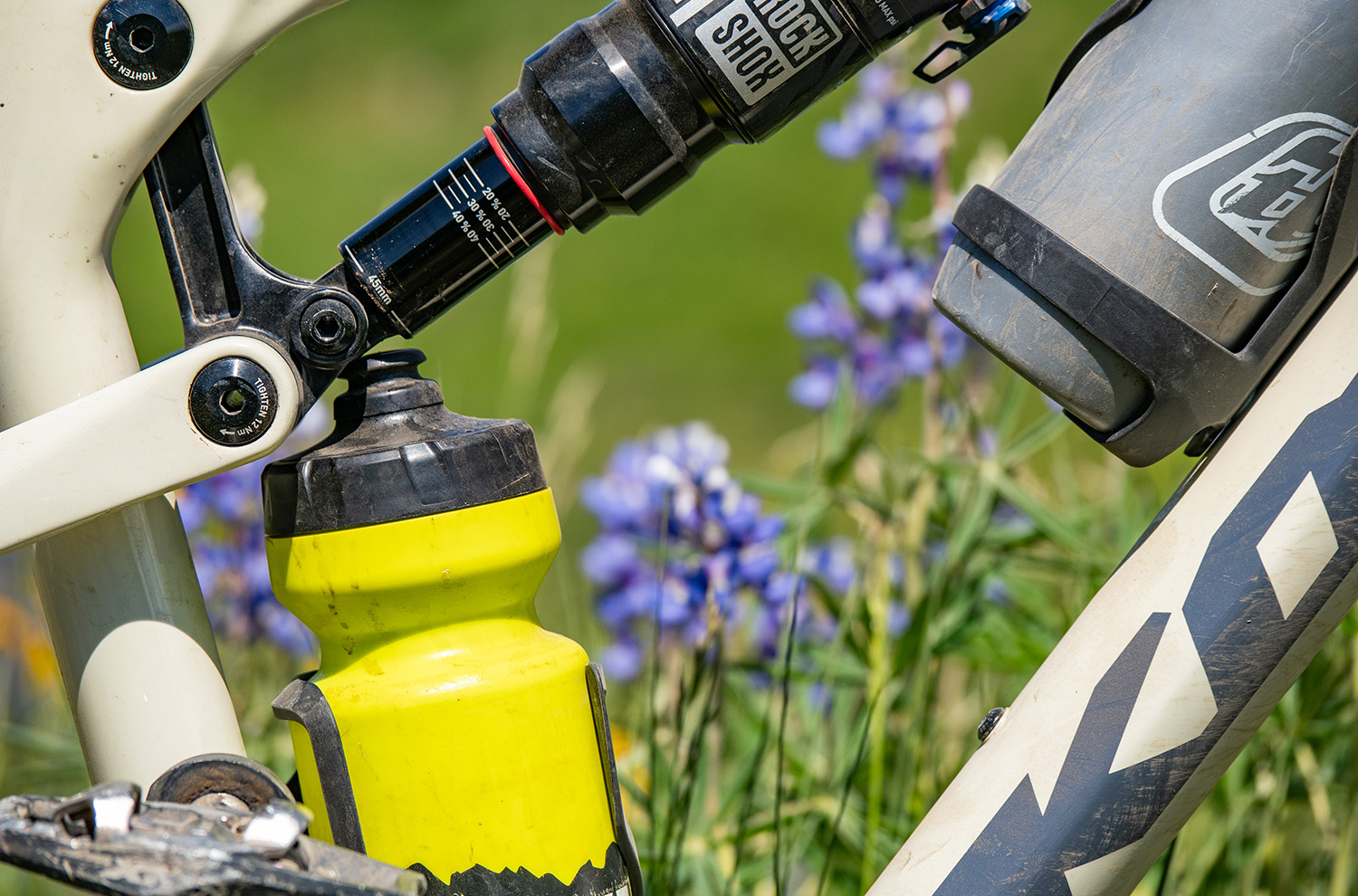
Who’s It For?
Folks looking for an efficient full-suspension mountain bike, but want better descending performance than a true XC race bike. The Hei Hei outclimbs just about anything with more suspension travel than it has, making it up tough climbs quickly and allowing you to leave more energy in the tank for long, demanding rides. But, it also feels more forgiving and precise on rough descents than World Cup XC bikes, making for a more enjoyable ride on the way down, and sometimes doing a better job of aiding in rider recovery on descents, allowing you to feel fresher for the next climb than you would on a lighter bike with less travel.
Folks looking to mostly focus on XC racing are likely better off on a true race bike, and those who are willing to trade some uphill efficiency for an even more forgiving ride are likely better off on a ~140-150 mm Trail bike. But for those who like to mix it up with pushing their limits on the uphill and avoiding the easiest lines on the downhill, the Hei Hei has a lot to like.
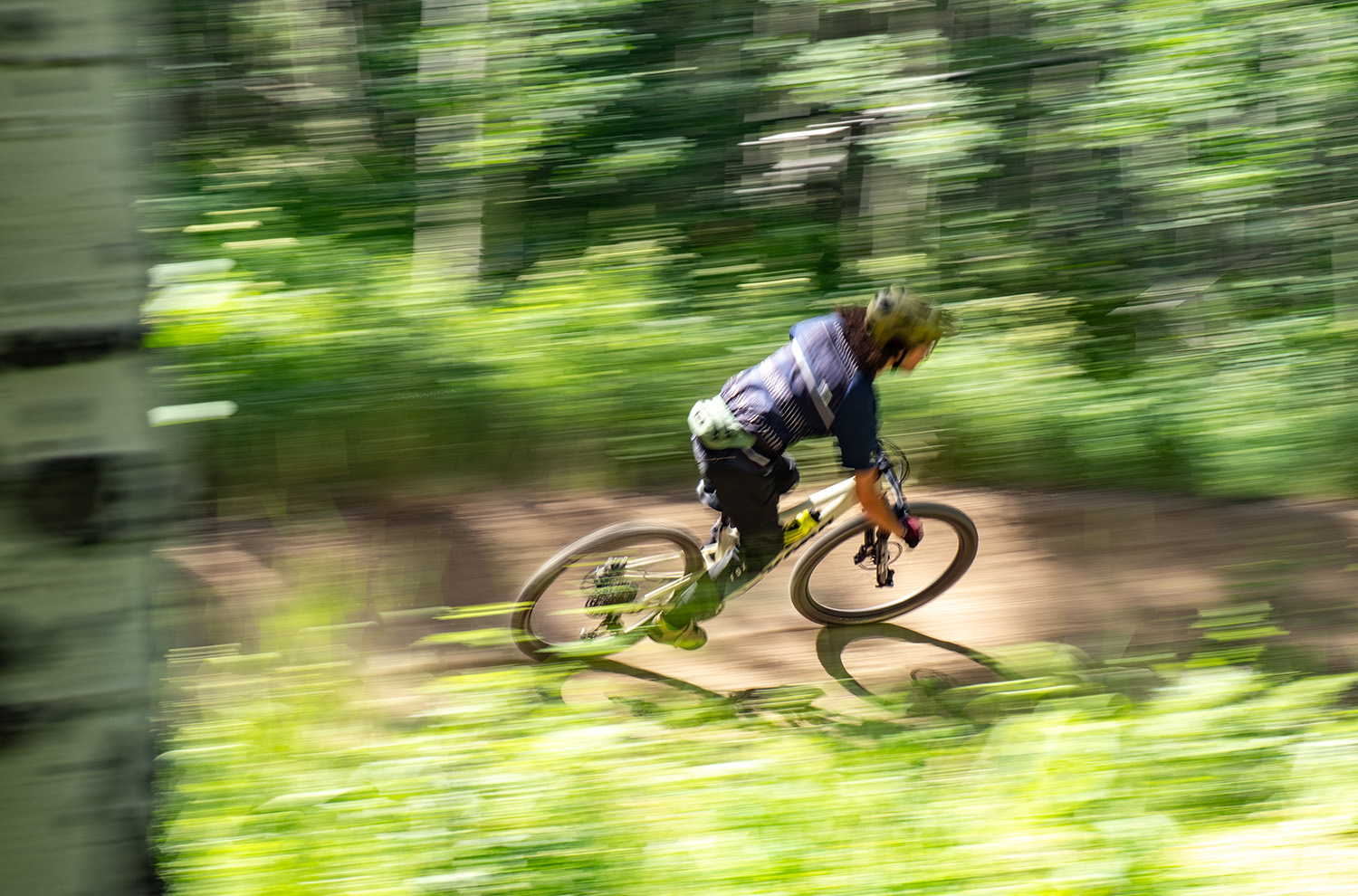
Bottom Line
Offering a versatile mix of XC uphill efficiency and Trail bike descending capability, the latest Hei Hei offers riders impressive performance on a variety of trails. While other options do better at specific use-cases, the Hei Hei brings a wide skillset to the table and does not pigeonhole riders into specific types of trails.
Deep Dive Comparisons
BLISTER+ members and those who purchase our Digital Access Pass can check out our Deep Dive comparisons linked below. Get our Digital Access Pass to view all our Deep Dives and Flash Reviews, or become a BLISTER+ member today to get access to that and a LOT more, including the best worldwide Outdoor Injury Insurance, exclusive deals and discounts on skis, personalized gear recommendations from us, and much more.
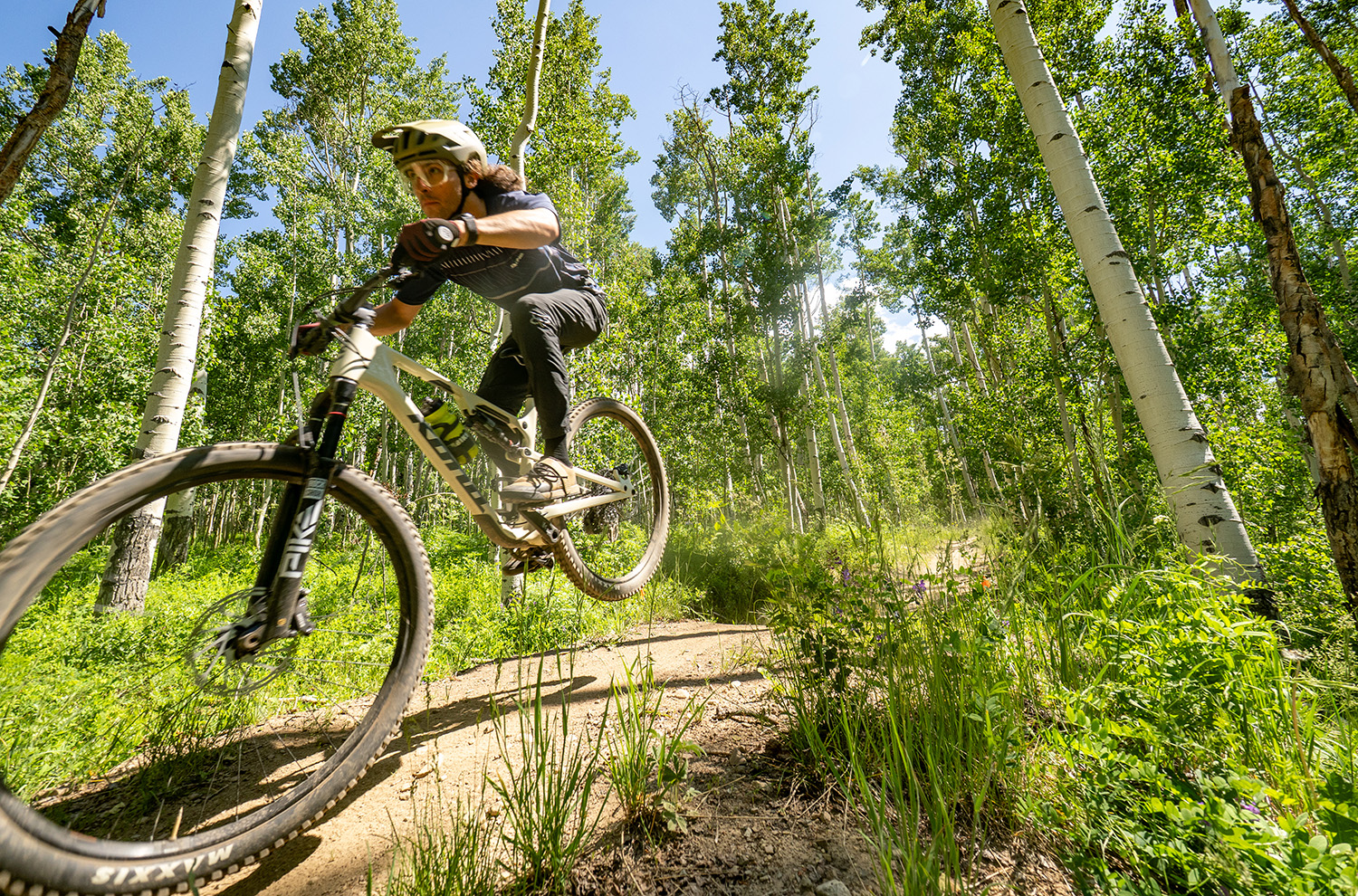
Deep Dive: Kona Hei Hei 10
We compare the Kona Hei Hei 10 to the Yeti SB120, Revel Ranger, Cannondale Scalpel, Yeti ASR, Commencal T.E.M.P.O, Niner JET 9 RDO, Cannondale Habit, Pivot Trailcat SL, SCOR 2030, Specialized Epic Evo, and Trek Top Fuel.
Blister’s Flash Reviews and Deep Dives are accessible to those who purchase one of our paid subscriptions
To get our comprehensive Deep Dives and our initial, unfiltered reports on new gear, become a member and receive many other services, deals, and discounts.
If you’re already an active member, please log in.
(If you’re already logged in and a member in good standing and seeing this message in error, please refresh this page in your browser.)

Looks like a fun bike but 435 stays with a 510 reach in an XL is really unbalanced especially for a bike that needs to climb well.
“The Pike Ultimate fork up front also provided the Hei Hei with steering precision that allowed this bike to outperform XC race bikes (often equipped with the lighter, skinnier RockShox SID fork or similar) on demanding descents.”
Your point stands, but the Pike and SID both use 35mm stanchions, so the SID is not really any “skinnier”.